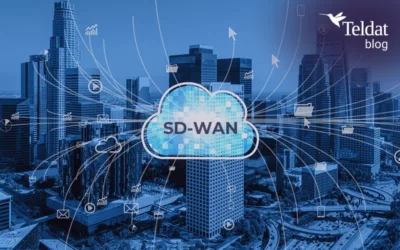 Smart Factories, the Internet of Things, cyber-physical systems, mass customization – these are the futuristic-sounding buzzword when it comes to Industry 4.0.
Smart Factories, the Internet of Things, cyber-physical systems, mass customization – these are the futuristic-sounding buzzword when it comes to Industry 4.0.
The term “Industry 4.0” provides information on all the hopes that are placed on the subject. It indicates a possible fourth industrial revolution – thus correspondingly the expectations are high.
Where does the “4.0”come from?
The new version number of “Industry” is preceded by historical developments. During the first industrial revolution, production processes were mechanized by water and steam power. In the second revolution conveyor belts and electrical energy were used and in the third one, digitization and computer facilities in production environments were introduced.
At each new stage of development the quality has been improved, production numbers have been increased and the possibilities have been multiplied. Now, many believe that we are at the threshold of having the fourth industrial revolution which is basically networking, electronics and information technology.
Is there a definition for Industry 4.0?
A uniform definition does not exist. However, in many interpretations, there is a common denominator: Industry 4.0 refers to the consistent digital networking of products, processes, machines and intra-logistics in the manufacturing industry – with the aim to open up previously untapped potentials and to increase productivity as well as flexibility. This kind of digitization enables the “intelligent factory” (also called “Smart Factory”) to be used, which is mainly characterized by reorganizing production processes. In addition, the intelligent factory also applies to business partners, such as external product designers, and opens up new opportunities to work effectively and agilely in the value chain.
Moreover, the product itself becomes the carrier of digital information throughout its lifecycle. This also allows in its usage phase an “intelligent” product behavior, for example, the independent triggering of service activities. In short, it is about a reorganization of industrial value-added processes by retrieval, networking and the use of the huge data potential in these processes.
Who needs industry 4.0?
Two major drivers of this development can be quickly identified. On the one hand, the need for further productivity improvements to ensure competitiveness in highly industrialized, but at the same time “expensive” economies like Germany. Here, Industry 4.0 will provide the next productivity boost. On the other hand, we as consumers create additional pressure via our demand patterns. We always want more custom-made products that are affordable and delivered within a very short time to our home. In order to meet these modern consumer demands, alternatives to traditional mass production in the production plants have to be found. Where once competitive advantages could only be achieved by totally standard product lines and maximum quantities, the market in recent decades, has steadily become buyer-driven and Industry 4.0 could again open up a whole new dimension.
Which path we have already traveled on the way from mass to individual solutions, can be well tracked by the example of the car manufacturer Ford. In 1913 the legendary founder Henry Ford promised his customers with undisguised self-mockery: “You can have the T-Model in any color – as long as it’s black.” Today, almost exactly 100 years later, the Ford F 150 has 16 equipment categories which allow in theory 653,687,735,500,800 possible configurations – in the end 12,870 of them are brought to market.
What does a smart factory look like?
The fully equipped “Industry 4.0” factory is not yet available. Nevertheless if we take the example of SmartFactory-KL and its intelligent production line, here quantities can be produced at quite competitive costs. The key is flexible networked and automated components that influence each time independently the production parameters.
The production of individualized products at the cost of a mass production becomes a reality.
How do products in Industry 4.0 become “intelligent”?
In simple terms: All this is made possible by the integration of objects and data. Therefore it is called “cyber-physical systems”. Hence goods and facilities that actually exist also have a “digital twin”. This means the twin stores all data that is important for the production and result from that production. All key players are supplied with this data that is required in order to continue the production line or transportation. This can be for instance for a machine, a painting facility, a conveyer belt or a lift truck in a warehouse. Sensors detect the condition of the machinery and the product and communication technologies at a reasonable price such as RFID allow to store and read the information. Therefore, all participants are networked in such decentralized, intelligent manufacturing on the “Internet of Things”. By 2020, there could be around 50 billion Internet-enabled industrial products, goods and infrastructures.
In order to accomplish the vital part of networking it is of course even more important to choose a global supplier of information and communications technology. Teldat provides innovative products and solutions in the competence areas of IP access, security, telephony and WLAN and is therefore a strong and competent partner to enter the next generation of industry 4.0.


























